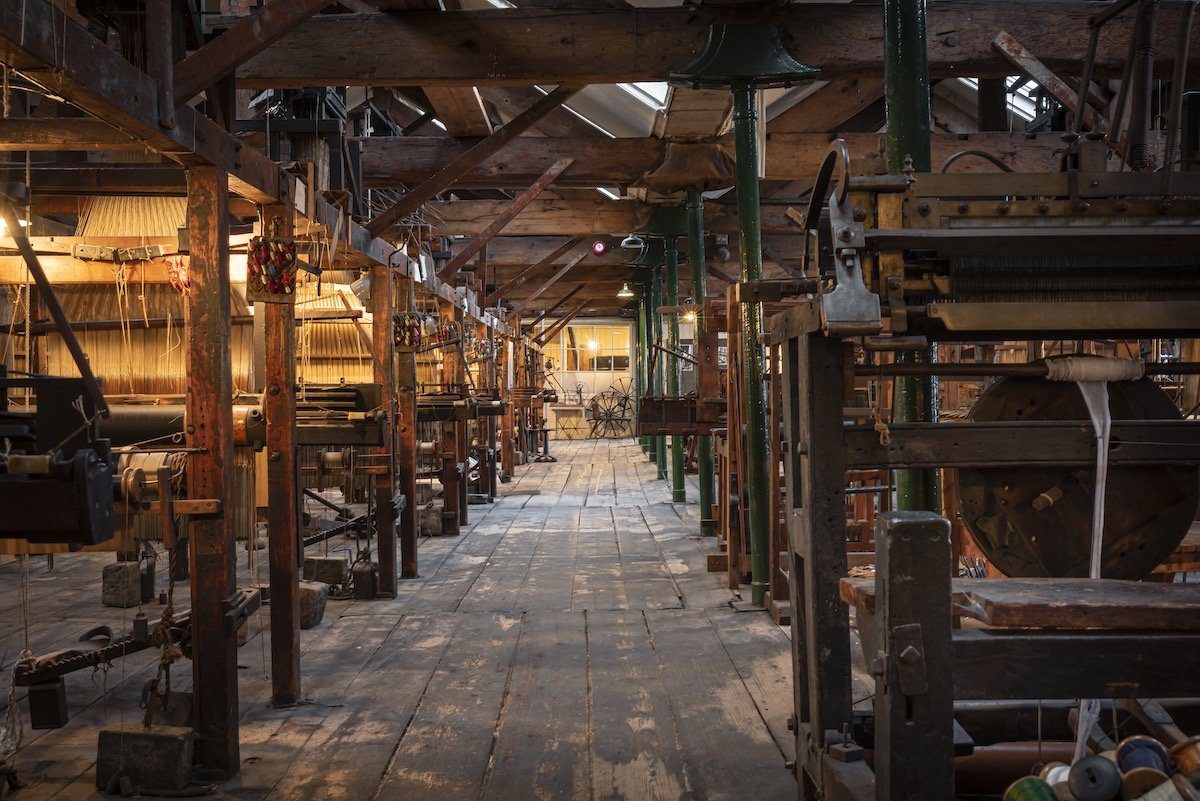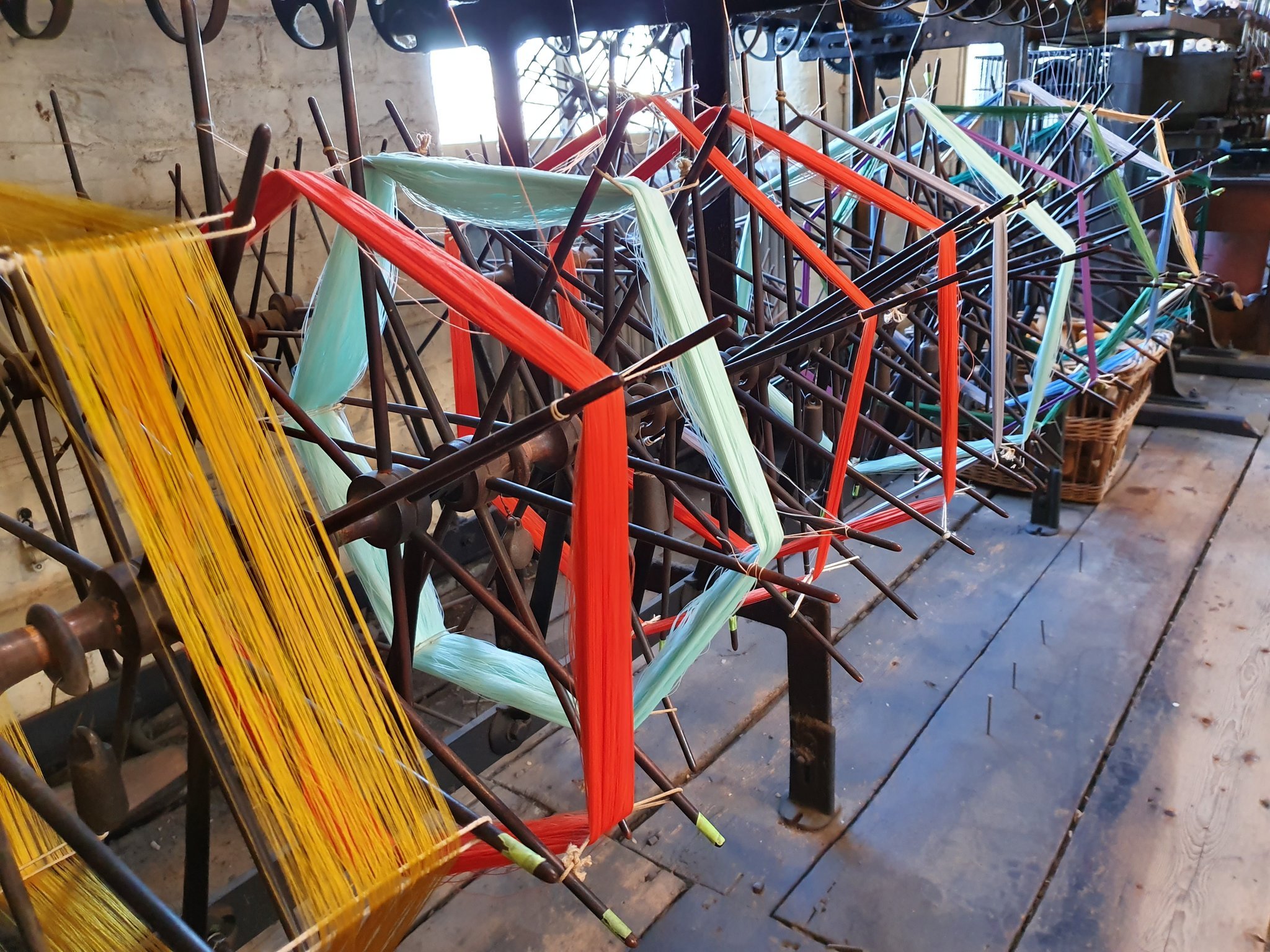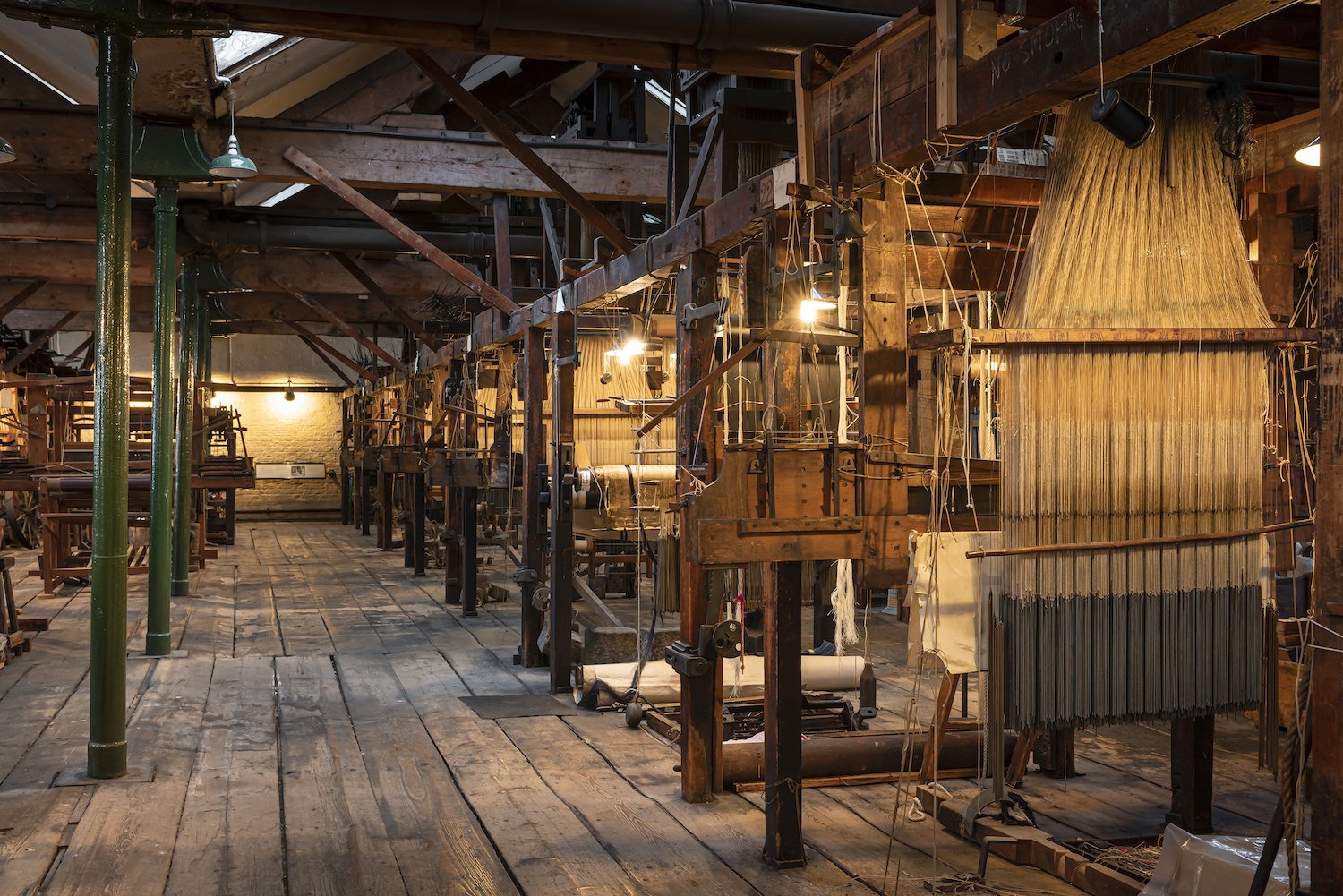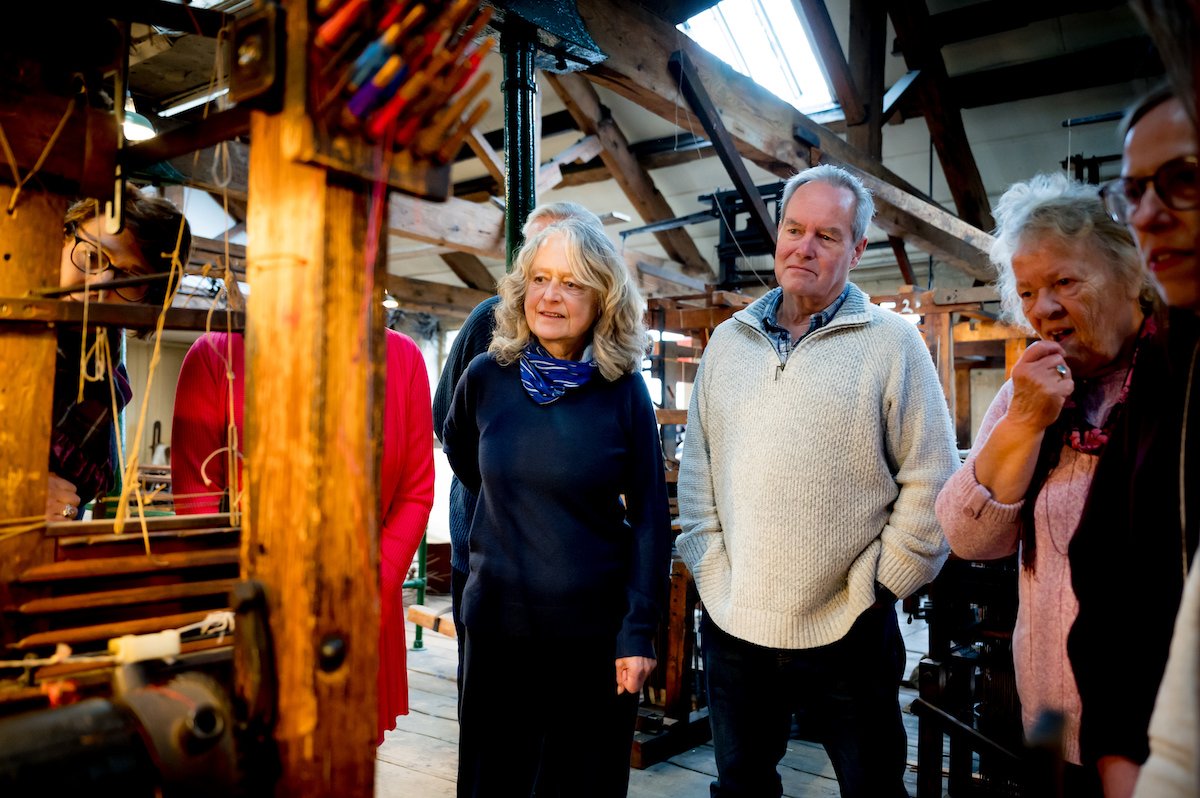
Welcome to Paradise
Step back in time at Paradise Mill…
Paradise Mill is the factory floor part of the Silk Museum and is open to the public for guided tours. The mill is the sole survivor of Macclesfield’s industrial and creative past, housing the largest collection of silk Jacquard handlooms in their original setting, plus a recreated Design Suite. Macclesfield was at one time the world's largest producer of finished silk, with 5,000 looms in 71 mill factories. The Jacquard mechanism, invented by Joseph-Marie Jacquard, is considered a precursor to modern computing because it was the first to use binary code to instruct a machine to carry out an automated process. This transformed the weaving process and catapulted industrial production into an era of great progress.
Built in 1862, Paradise Mill produced luxury silk goods for an international audience including retailers such as Liberty of London until it closed in 1981 and has been left largely untouched until this day.
Our guides will demonstrate how this luxurious textile was made on these incredible handlooms.
Explore the lives of the millworkers who created silk here throughout the 19th and 20th centuries. Discover the social history and political background of the silk industry.
Tours run Wednesday to Saturday at 11.00am, 12.30pm and 2.30pm.
Please book via the button below or call in to the museum.
“Thanks to Tim I now understand how looms work and how hard it was to work in such a place. It’s like taking a step back in time.”
Paradise Mill is a historic building built in 1862 and by 2023 the building was feeling its age. The roof was leaking, endangering the precious collections within and the original lift was no longer functional so the only way to see the preserved mill floor was via 49 steps.
Thanks to the mill’s owners, Allmand-Smith Ltd, the roof and lift of Paradise Mill are now fully restored, making the top floor of the mill accessible for those with limited mobility.
A £309k National Heritage Memorial Fund award allowed the Silk Heritage Trust, who run the museum, to acquire a 125-year lease of the top floor of Paradise Mill. This will ensure visitors can enjoy the atmosphere of the mill for many years to come.
“I love the atmosphere of the Mill space itself; the pitch pine wood that forms the Mill’s interior architectural structure, including the loom frames. There’s history in every bit of wear and tear on the wood; evidence of the people that worked there in the past. The fact that these looms are the same looms that were used by Cartwright & Sheldon weavers is what makes the Paradise Mill space magical.”
Restoration Of the Looms
Work is now well underway to restore two of the nineteenth century silk Jacquard handlooms thanks to funding granted by the Association for Industrial Archaeology, The Radcliffe Trust and Rogers & Goffigon. Tour guides at the museum, Daniel Hearn, and Trish Halloran, alongside Bea Uprichard and Ruth Farris, are painstakingly undertaking the conservation of the 400-hook handlooms.
Thanks to this work, one handloom is now fully functional and can be seen in action on guided tours, while the second is nearing completion. If you are lucky you may catch our restoration team at work on your next mill visit.
Daniel Hearn, one of the team who has taken on the task, says: “This restoration involves considerable effort, especially the building of a new Jacquard harness. There is more work to do, and still more to learn. Establishing a strong foundation in acquiring these skills means we are taking the first critical steps in ensuring that this niche type of Jacquard handloom weaving remains operational within the extraordinary time capsule that is Paradise Mill.”
Endangered Craft of silk weaving
Silk weaving has now joined the list of Endangered Heritage Craft Skills. Jacquard silk handweaving is a highly time-consuming skill to learn. The Silk Museum has secured funding from The Radcliffe Trust to work up a plan for the conservation of the looms alongside creative placements for emerging craftspeople. Read more about the work of our graduates and the history of female designers at the Mill.
GROup tours
Visit us with your group for a brilliant day out. A guided tour of Paradise Mill reveals a world of stories. Discover social history, engineering and technology, fashion and design. We are close to the foothills of the Peak District and the borders of Cheshire, Derbyshire, Staffordshire and Greater Manchester so we can form part of a wider itinerary. We can tailor a package to meet your needs.
Group Guided Tours of Paradise Mill are £10.50 per adult. Please note: a group is 10 Adults or more. The Silk Museum entry is free of charge, but we do ask for a donation.
Please email us to book your group visit bookings@silkmacclesfield.org.uk

A little bit of Paradise
The Upper Mill was purpose built around 1824 for manufacturing silk. In 1862 during a slump in trade, the owner John Bagshaw, a cotton manufacturer, pulled down the neighbouring 18th century mill and built Lower Mill, which we know today as Paradise Mill.
During the second half of the 19th century, the mills were used by several silk and cotton manufacturers. In 1870, David Hooton and John Hockenhull, who already occupied the second floor for cotton weaving, bought the mills, and it was at this time that the term Paradise Mills was first used. By now the cotton industry in Macclesfield was declining, and from 1891 the mills were used exclusively for silk. One of the more notable tenants was James Kershaw, whose firm was well known for the richness of design and variety of fabrics; He produced nothing but new style, and in less than six months had at least 100 looms in full work, using new modern machinery. By 1891 the mills were exclusively used for silk manufacturing.
Access at Paradise Mill
The Silk Museum is split over two sites. Paradise Mill is a listed industrial building. It has original features, which means that the floor is uneven and some of the spaces are small. Paradise Mill can be accessed by a lift suitable for wheelchairs and via three flights of stairs, totalling 49 steps.
The Silk Museum is all on the ground floor and is suitable for prams, wheelchairs, mobility scooters, crutches, and Zimmer frame users. A unisex disabled access toilet, with baby changing facilities is available at the Silk Museum. There is a disabled parking bay in the nearby Old Library car park.











